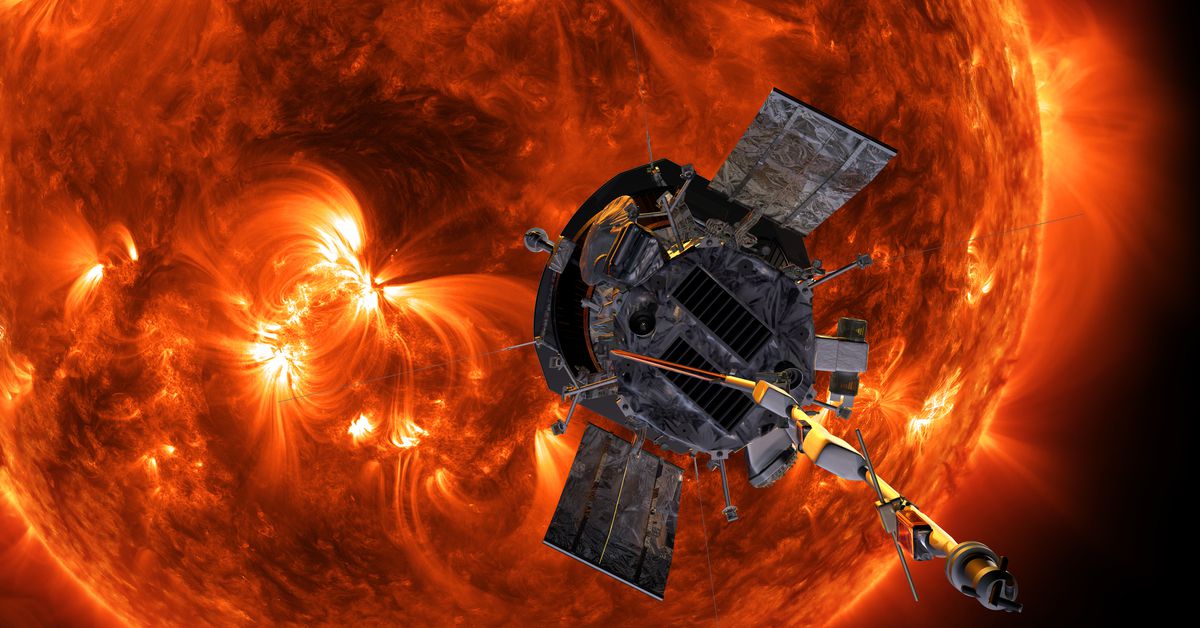NASA’s Parker Solar Probe Embarks on Historic Mission to the Sun
In a groundbreaking achievement, NASA’s Parker Solar Probe has successfully flown within 3.8 million miles of the surface of the Sun and transmitted a signal back to Earth, indicating that it is in good health and operating normally.
This historic mission marks the closest human-made object has ever gotten to the Sun, with the probe flying at an incredible speed of 430,000 miles per hour past the solar surface on December 24th. During this time, mission operations were out of contact with the probe, but now that NASA has confirmed the success of the mission, they expect the Parker Solar Probe to send detailed telemetry data on its status on January 1st.
The Close Flyby: A Pioneering Achievement
The close flyby of the Sun is a pioneering achievement that will provide scientists with invaluable insights into the solar wind, the Sun’s heat, and how energetic particles are accelerated to near light speed. The Parker Solar Probe was launched by NASA and Johns Hopkins Applied Physics Laboratory in 2018, and its primary mission is to study the corona – the atmosphere surrounding the Sun – which gets scorching hot.
To survive these close encounters with the Sun’s intense heat, the Parker Solar Probe is equipped with a sophisticated heat shield that can withstand temperatures of up to 2,500 degrees Fahrenheit. This remarkable technology allows the probe to operate safely while collecting crucial data on the Sun’s corona and its effects on the solar system.
The Science Behind the Mission
The Parker Solar Probe’s close flyby will help scientists answer some of the most fundamental questions about the Sun and its behavior. The mission is designed to study the following key areas:
- Solar Wind: Scientists want to understand how the solar wind, a stream of charged particles emitted by the Sun, affects the entire solar system.
- Sun’s Heat: Researchers are interested in understanding why the corona gets so hot, despite being farther from the Sun’s core than the surface.
- Energetic Particles: Scientists want to know how energetic particles are accelerated to near light speed and what role they play in shaping the solar system.
The Parker Solar Probe: A Technological Marvel
The Parker Solar Probe is an engineering marvel, designed to withstand the intense heat generated by the Sun’s corona. The probe itself remains at a relatively cool temperature of 85 degrees Fahrenheit, thanks to its cutting-edge heat shield technology. This incredible feat of engineering allows the probe to collect data on the Sun’s corona without being damaged by the extreme temperatures.
The Future of Space Exploration
NASA’s Parker Solar Probe mission represents a significant milestone in space exploration and a testament to human ingenuity. The success of this mission will pave the way for future spacecraft to explore the solar system, providing scientists with unprecedented insights into the Sun’s behavior and its effects on our cosmic neighborhood.
As we continue to push the boundaries of space exploration, we are reminded of the importance of pushing the limits of what is thought possible. The Parker Solar Probe mission serves as a shining example of human curiosity and determination, inspiring future generations to explore the vast expanse of space.
Conclusion
In conclusion, NASA’s Parker Solar Probe has successfully flown within 3.8 million miles of the surface of the Sun, marking a historic achievement in space exploration. The probe’s close flyby will provide scientists with invaluable insights into the solar wind, the Sun’s heat, and how energetic particles are accelerated to near light speed. As we continue to explore the solar system, we are reminded of the importance of pushing the boundaries of what is thought possible.
Additional Resources
- NASA Parker Solar Probe Mission Website: www.nasa.gov/parker
- Parker Solar Probe Overview: science.nasa.gov/missions/parker-solar-probe
- Solar Wind and the Sun’s Corona: en.wikipedia.org/wiki/Solar_wind




